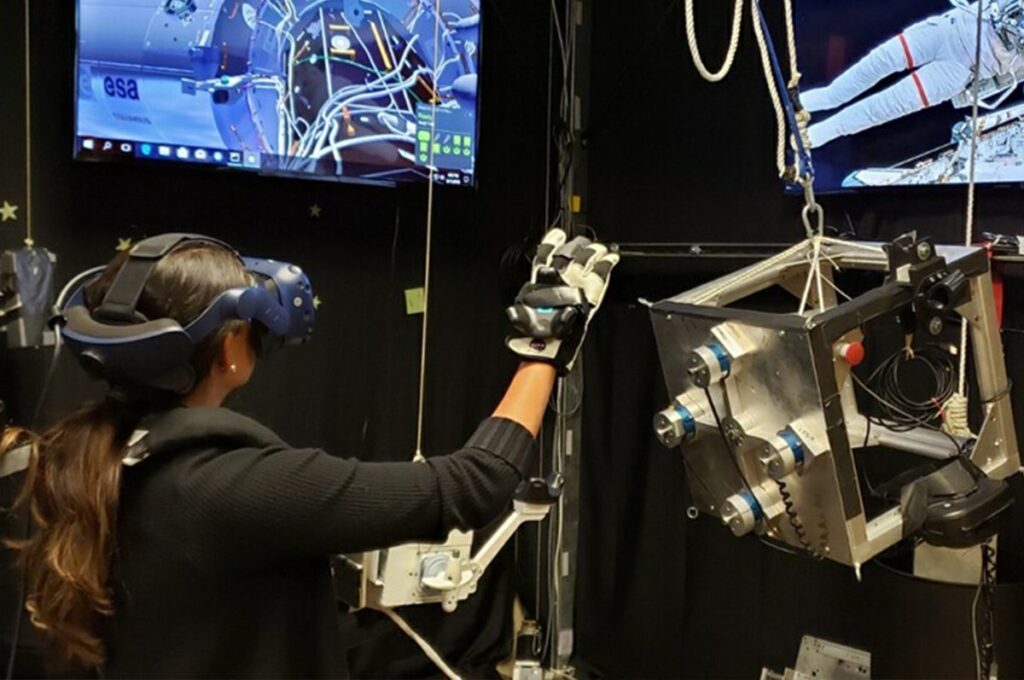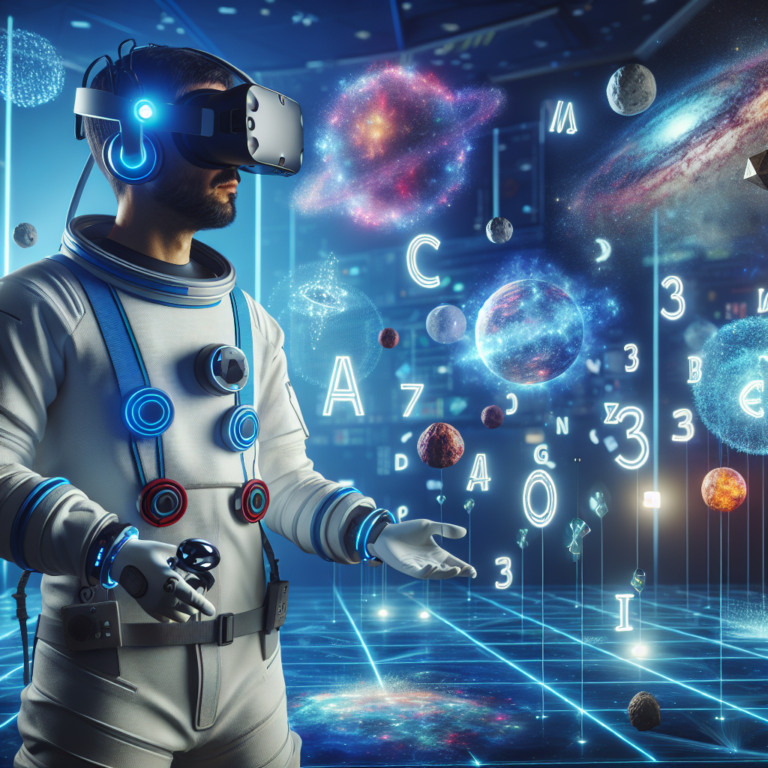Journey Beyond Earth: The Role of Immersive Technologies in Astronaut Training 🚀

Introduction: A New Frontier in Space Training
As humanity sets its sights on the stars, the preparation of astronauts becomes ever more critical. The challenges of space travel—limited resources, unpredictable environments, and the sheer distance from Earth—necessitate a new approach to astronaut training. Enter immersive technologies, a groundbreaking method that combines virtual reality (VR), augmented reality (AR), and simulation environments to help astronauts master the unknown.
Understanding Immersive Technologies
Immersive technologies are redefining how we engage with information and training. By creating lifelike simulations and interactive environments, these technologies offer:
- Virtual Reality (VR): A technology that immerses users in a fully digital environment, making them feel as if they are truly somewhere else.
- Augmented Reality (AR): A technology that overlays digital information onto the real world, enhancing the user’s perception of their environment.
- Mixed Reality (MR): Combines aspects of both VR and AR, allowing real and digital objects to coexist and interact in real-time.
The Need for Advanced Training Techniques
Training astronauts for missions beyond Earth requires more than just theoretical knowledge. The physical and psychological demands of space travel are intense. Immersive technologies provide a solution by:
- Simulating Complex Scenarios: Astronauts can practice landing on other planets, spacewalks, and emergency scenarios without leaving the safety of Earth.
- Enhancing Problem-Solving Skills: Through realistic simulations, astronauts can learn to think on their feet, developing critical thinking and decision-making skills.
- Reducing Anxiety: Familiarity with environments that simulate the conditions of space can help to alleviate fear and anxiety associated with space missions.
Revolutionizing Astronaut Training with VR
Picture this: an astronaut steps into a VR pod, equipped with a headset and motion sensors. Suddenly, they are floating in a space station, tasks and challenges unfolding around them. VR training is revolutionizing how astronauts prepare by offering:
- Real-Time Feedback: Astronauts receive immediate responses to their actions, helping them refine their skills quicker than traditional methods.
- Rehearsal of Spacewalks: VR allows astronauts to practice extravehicular activities (EVAs) in a risk-free environment, mimicking the conditions they will face outside their spacecraft.
- Manipulating Complex Equipment: Training with a fully immersive VR system equips astronauts with the know-how to operate technical equipment they will encounter in space.
Augmented Reality: Merging Digital and Real Worlds
AR has emerged as a powerful tool for astronaut training, enhancing learning processes and operational readiness. With AR, astronauts can:
- Receive real-time Guidance: AR applications can overlay instructions on machinery and tools, guiding astronauts through complex procedures as they occur.
- Conduct Remote Training: In AR environments, trainers can guide astronauts remotely, allowing for global collaboration and expertise sharing.
- Visualize Data: AR enables astronauts to visualize immense amounts of data in a digestible format, thus enhancing their decision-making capabilities.
Challenges and Future Directions
While the benefits of immersive technologies in astronaut training are clear, there are challenges that need addressing:
- Technological Limitations: Not all simulations can recreate the intricate realities of space, leading to gaps in training.
- Cost of Technology: The initial investment required for cutting-edge immersive training tools can be high.
- User Adaptability: Astronauts must adapt to new technologies, which can be challenging for those accustomed to traditional methods.
Looking Ahead: The Future of Immersive Training
As technology continues to advance, the future of astronaut training is exceptionally bright. Considerations for the coming years include:
- Increased Integration: A blend of VR, AR, and MR will create comprehensive training environments that fully replicate space conditions.
- Personalized Training Plans: Customized training programs using data analytics can tailor experiences to each astronaut’s needs and skills.
- Broader Applications: While focused on space, these advancements may find applications in various fields such as medicine, emergency response, and even corporate training, expanding their impact beyond the stars.
Success Stories & Real-World Applications
The effectiveness of immersive training technologies can be witnessed through various success stories:
- The European Space Agency (ESA): They have successfully implemented VR training modules for astronauts preparing for missions to the International Space Station (ISS).
- NASA’s Johnson Space Center: Uses AR to prepare astronauts for tasks on Mars, allowing them to virtually explore Martian terrain before their journey.
- Private Sector Innovations: Companies like SpaceX are investing in training simulations that can adapt in real-time to astronauts’ decisions, improving readiness.
The Role of Collaboration and Continuous Improvement
To capitalize on the potential of immersive technologies in astronaut training, collaboration among industry leaders, researchers, and space agencies is vital. With continuous feedback loops and shared advancements, the training programs will only get better. Platforms like the International Space Station serve as living laboratories where techniques can be tested and refined.
The Psychological Readiness for the Unknown
Ultimately, the most significant challenge that immersive technologies can help tackle is the psychological readiness of astronauts. Space is often referred to as the final frontier, and helping astronauts mentally prepare for such vast unknowns is essential. Technologies that reduce isolation, simulate the experience of being in space, and allow them to engage with fellow astronauts will support mental health and endurance.
As we move towards a future filled with the mystery of the universe, immersive technologies represent not just a training tool, but a vital step toward forging a pathway among the stars. Each innovation is a building block, paving the way for humanity’s next great adventure.




0 Comments